Three indentical uniform blocks of mass m each and length L are placed on a smooth fixed horizontal surface as shown. There is friction between A and B (Friction cofficient μ) while there is no friction between A and C. At the instant shown, that is at t=0, the block A has horizontal velocity of magnitude u towards right, whereas speed of B and C is zero. At the instant block A has covered a distance L relative to block B velcity of all blocks are same.
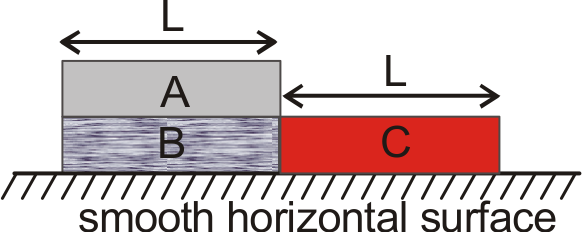
The value of μ is
μ=32u2gL
μ=12u2gL
μ=u2gL
μ=23u2gL
From conservation of momentum
3mv=mu or v=u3
Net workdone by friction =123m(u3)2−12mu2=−13mu2
net work done by fricktion =0∫rμ(xλg)(−dx)=−μλg(L2)2
Also magnitude of net work done by friction =μλg(L2)2=μmg(L)2
∴13mu2=μmg(L)2 or μ=23u2gL
3mg=mu or v=u3
Topper's Solved these Questions
Similar Questions
Two identical blocks A and B of mass M each are kept on each other on a smooth horizontal plane. There exists friction between A and B. A bullet of mass m hits the the lower block with a horizontal velocity v and goes embedded into it. Find the work done by friction between A and B.
View SolutionA block is kept on a rough horizontal surface as shown. Its mass is 2 kg and coefficient of friction between block and surface (μ)=0.5. A horizontal force F is acting on the block. When
 View Solution
View Solution
Knowledge Check
- Question 1 - Select One
Three indentical uniform blocks of mass m each and length L are placed on a smooth fixed horizontal surface as shown. There is friction between A and B (Friction cofficient μ) while there is no friction between A and C. At the instant shown, that is at t=0, the block A has horizontal velocity of magnitude u towards right, whereas speed of B and C is zero. At the instant block A has covered a distance L relative to block B velcity of all blocks are same.
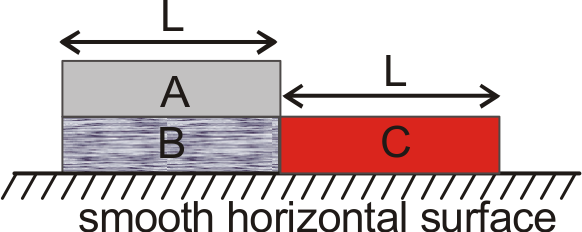
The magnitude of total work done by friction on system of three blocks isA−13mu2B−14mu2C−23mu2D12mu2 - Question 2 - Select One
Three indentical uniform blocks of mass m each and length L are placed on a smooth fixed horizontal surface as shown. There is friction between A and B (Friction cofficient μ) while there is no friction between A and C. At the instant shown, that is at t=0, the block A has horizontal velocity of magnitude u towards right, whereas speed of B and C is zero. At the instant block A has covered a distance L relative to block B velcity of all blocks are same.
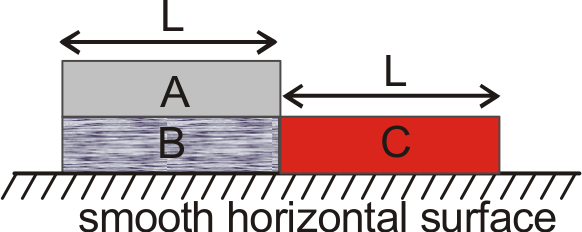
The speed of block A when it just looses contact with B isAu/2Bu/3Cu/4D2u3 - Question 3 - Select One
A block 'B' rests on 'A' A rests on a horizontal surface 'C' which is frictionless. There is friction between A and B If 'B' pulled to the right .
AB moves forward and A to the leftB'B' only moves to the leftCB' does not moveD'A' and 'B' move together to the right .
Two blocks A and B of masses mA and mB have velocity v and 2v respectively at a given instant A horizontal force F acts on the block A There is no friction between ground and block B and coefficient of friction between A and B is μ The friction
 View Solution
View SolutionA block A of mass m is over a plank B of mass 2m. Plank B si placed over a smooth horizontal surface. The coefficient of friction between A and B is 12. Blocks A is given a velocity V0 towards right. Then
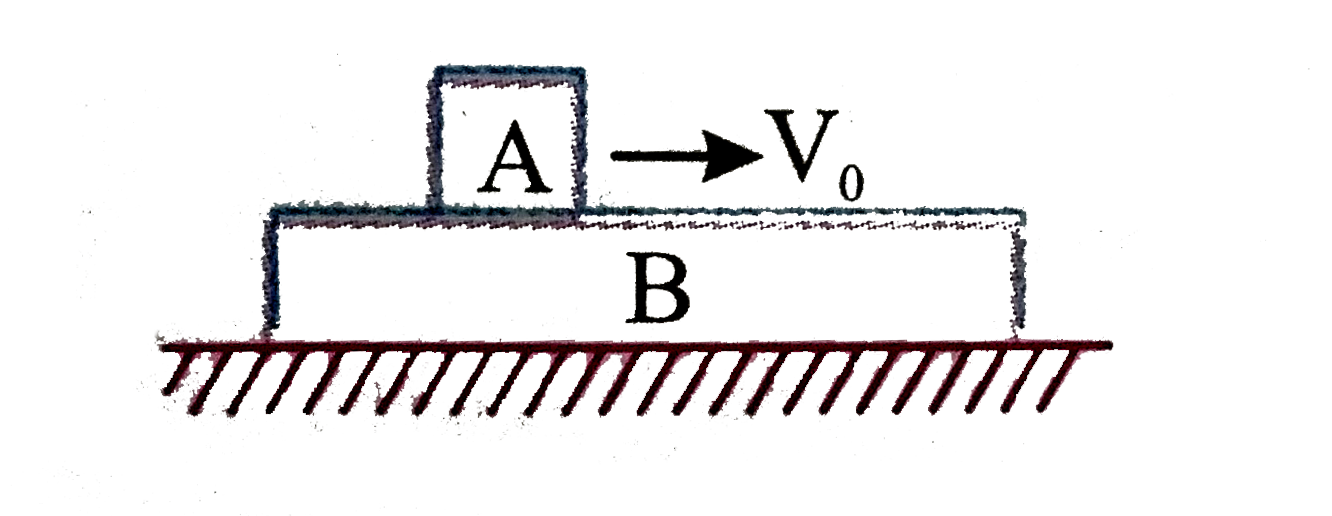 View Solution
View SolutionA block of mass m is pulled by a force of constant power P placed on a rough horizontal plane. The friction coefficient between the block and the surface is μ. Then
View SolutionA triangular wedge is placed on smooth horizontal surface. A block is placed on wedge as shown in the figure. Coefficient of friction between block and wedge is μ. Initially system reamins at rest.
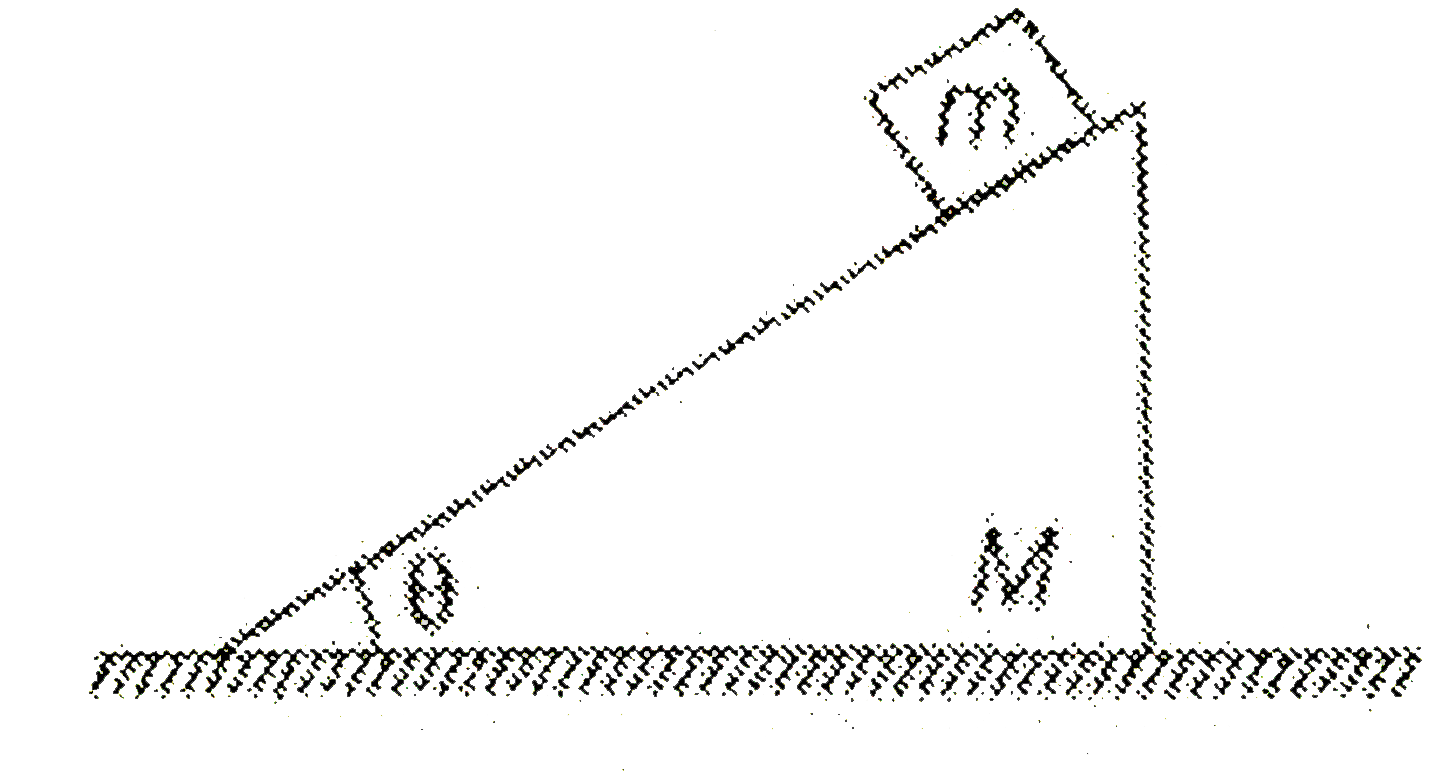 View Solution
View SolutionA plank of mass 10 kg and a block of mass 2 kg are placed on a horizontal plane as shown in the figure. There is no friction between plane and plank. The coefficient of friction between block and plank is 0.5 .A force of 60 N is applied on plank horizontally. In first 2 s the work done by friction on the block is
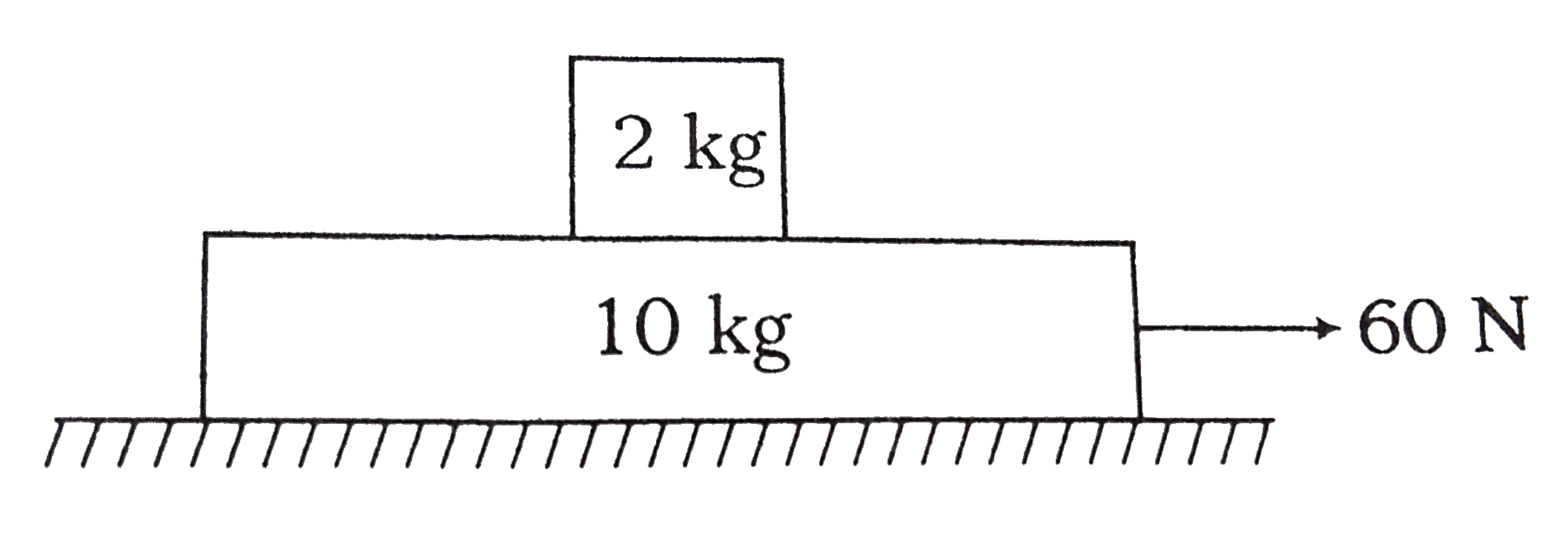 View Solution
View Solution

